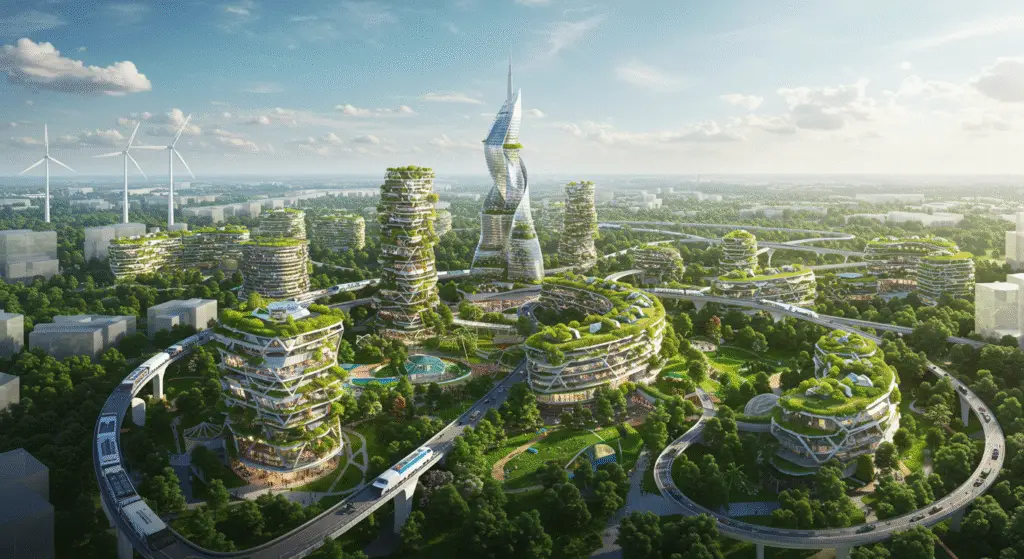What are the four grand challenges of engineering?

In the dynamic and ever-evolving world of engineering, a select few challenges stand out as truly transformative – problems so complex and far-reaching that their solutions have the power to shape the future of humanity and our planet.
These are known as the four grand challenges of engineering, and they represent the pinnacle of the field’s ambition and problem-solving capabilities.
As the global population continues to grow and the demand for resources intensifies, engineers are tasked with developing innovative solutions to address these grand challenges.
By leveraging the latest technologies, fostering multidisciplinary collaboration, and embracing a forward-thinking mindset, the engineering community is poised to tackle these monumental issues and pave the way for a more sustainable, equitable, and resilient future.
Let’s explore the four grand challenges of engineering in detail and examine how engineers are rising to meet these formidable obstacles.
Sustainable Infrastructure

One of the most pressing grand challenges facing the engineering community is the need to develop sustainable infrastructure that can support the growing global population and mitigate the impact of human activity on the environment. This encompasses a wide range of infrastructure systems, including transportation, energy, water management, and urban planning.
Engineers are tackling this challenge by designing innovative solutions that prioritize sustainability, efficiency, and resilience. For example, the development of renewable energy technologies, such as advanced solar panels, wind turbines, and energy storage systems, is enabling the transition towards a decarbonized power grid. Additionally, the implementation of smart city technologies, including intelligent traffic management systems and green building design, is helping to reduce resource consumption and emissions while enhancing the livability of urban areas.
Furthermore, engineers are working to create more sustainable and resilient transportation systems, such as high-speed rail networks, electric vehicles, and multimodal transit hubs. These solutions not only reduce the environmental impact of transportation but also improve connectivity and accessibility for communities around the world.
By integrating renewable energy, smart city technologies, and sustainable transportation, engineers are laying the groundwork for infrastructure that can support the growing global population while minimizing its environmental footprint. This holistic approach to infrastructure development is crucial in addressing the challenges of climate change, resource scarcity, and urban sprawl.
Advancing Health Informatics

As the global population ages and the prevalence of chronic diseases continues to rise, the engineering community is tasked with developing innovative solutions to improve healthcare delivery and patient outcomes. This grand challenge, known as advancing health informatics, involves the integration of technology, data, and medical expertise to enhance the diagnosis, treatment, and prevention of illness and disease.
Engineers are at the forefront of this effort, collaborating with healthcare professionals to design cutting-edge medical devices, telemedicine platforms, and data-driven decision support systems. From wearable sensors that continuously monitor vital signs to artificial intelligence-powered diagnostic tools that can identify diseases with unprecedented accuracy, the advancements in health informatics are transforming the way we approach healthcare.
Moreover, engineers are working to improve the accessibility and affordability of healthcare, particularly in underserved communities. By leveraging technologies such as mobile health apps and distributed healthcare networks, they are helping to bridge the gap and ensure that quality medical care is available to all, regardless of geographic or socioeconomic barriers.
As the healthcare landscape evolves, engineers must continue to push the boundaries of what is possible, integrating emerging technologies like genomics, personalized medicine, and regenerative therapies to deliver more targeted and effective healthcare solutions. By doing so, they can contribute to the improvement of patient outcomes, the reduction of healthcare costs, and the overall enhancement of global health and well-being.
Securing Cyberspace

In an increasingly interconnected world, the grand challenge of securing cyberspace has become a paramount concern for engineers and policymakers alike. As our reliance on digital technologies continues to grow, the threat of cyber attacks, data breaches, and online criminal activity has also escalated, posing significant risks to individuals, businesses, and critical infrastructure.
Engineers are at the forefront of this challenge, developing advanced cybersecurity measures and resilient systems to protect against these emerging threats. This includes the design of robust encryption algorithms, intrusion detection systems, and secure communication protocols that can safeguard sensitive information and critical infrastructure from malicious actors.
Additionally, engineers are playing a crucial role in developing artificial intelligence-powered tools and systems that can autonomously detect, respond to, and mitigate cyber threats in real-time. By leveraging machine learning and predictive analytics, these solutions can identify patterns, anomalies, and potential vulnerabilities, allowing for proactive and adaptive cybersecurity measures.
As the cyber landscape continues to evolve, engineers must remain vigilant and innovative, constantly adapting their approaches to stay ahead of the curve and ensure the integrity and security of the digital world. This requires a deep understanding of emerging technologies, as well as the ability to anticipate and mitigate the complex and ever-changing threats that arise in the cyber domain.
Providing Access to Clean Water

The provision of clean and accessible water is a fundamental human right, yet millions of people around the world lack access to this essential resource. This grand challenge of engineering, known as providing access to clean water, is a vital issue that requires a multifaceted and collaborative approach to address.
Engineers are playing a crucial role in developing innovative solutions to this challenge, from the design of advanced water purification systems to the creation of efficient water distribution networks. By leveraging technologies such as desalination, water recycling, and decentralized water treatment, engineers are working to expand the availability of clean water in regions where it is scarce or contaminated.
Moreover, engineers are collaborating with policymakers, community organizations, and international development agencies to ensure that these solutions are tailored to the specific needs and challenges of local communities. This includes the development of affordable and scalable technologies, as well as the implementation of sustainable water management practices that empower communities to take ownership of their water resources.
As the impacts of climate change and population growth continue to strain the world’s water resources, the need for innovative engineering solutions has never been more urgent. By tackling this grand challenge, engineers can contribute to the fundamental human right of access to clean water, improving the health, well-being, and economic opportunities of communities around the globe.
- Embracing Multidisciplinary Collaboration to Tackle the Grand Challenges
Addressing the four grand challenges of engineering requires a multidisciplinary approach that leverages the expertise and perspectives of professionals from diverse fields. By fostering collaboration between engineers, scientists, policymakers, and community stakeholders, the engineering community can develop holistic and sustainable solutions that have a far-reaching impact.
This collaborative mindset is essential as the challenges facing the world become increasingly complex and interconnected. For example, the development of sustainable infrastructure requires not only technical expertise in civil and environmental engineering but also an understanding of urban planning, public policy, and the social and economic factors that shape communities.
Similarly, the advancement of health informatics demands the integration of biomedical engineering, computer science, and healthcare management to create solutions that are both technologically innovative and responsive to the needs of patients and healthcare providers.
By embracing this multidisciplinary approach, engineers can harness the power of diverse perspectives, knowledge, and skills to tackle the grand challenges in a comprehensive and impactful manner. This collaboration can lead to the development of groundbreaking technologies, the implementation of effective policies, and the creation of lasting change that benefits communities around the world.
Shaping a Sustainable and Equitable Future through Technological Innovation
As the engineering community continues to tackle the four grand challenges, their efforts will have far-reaching implications for the future of our planet and its inhabitants. By developing innovative solutions that address these monumental issues, engineers are paving the way for a more sustainable, equitable, and resilient world.
Whether it’s the design of renewable energy systems, the advancement of healthcare technologies, the fortification of cybersecurity measures, or the provision of clean water access, the work of engineers is essential in shaping a future that is better prepared to meet the needs of a growing global population and the ever-changing environmental landscape.
By embracing the spirit of innovation, collaboration, and a deep commitment to the greater good, the engineering community is poised to tackle the grand challenges head-on, demonstrating the immense power of their discipline to positively transform the world around us.
As we navigate the complex and interconnected challenges of the 21st century, the engineering community stands ready to lead the way, leveraging their technical expertise, creative problem-solving, and unwavering determination to build a more sustainable, equitable, and prosperous future for all.
Pingback: What are the big 5 types of engineering?
Pingback: Problem-solving: What are the 4 approaches to problem-solving?
Pingback: Solving: What are the 5 problem-solving methods?
Pingback: What is the engineering method of problem-solving?
Pingback: How does technology affect engineering?
Pingback: What are 5 engineering methods? Resilient engineering methods
Pingback: Climate Resilient Engineering
Pingback: Green Infrastructure Engineering: Sustainable Solutions for the Future